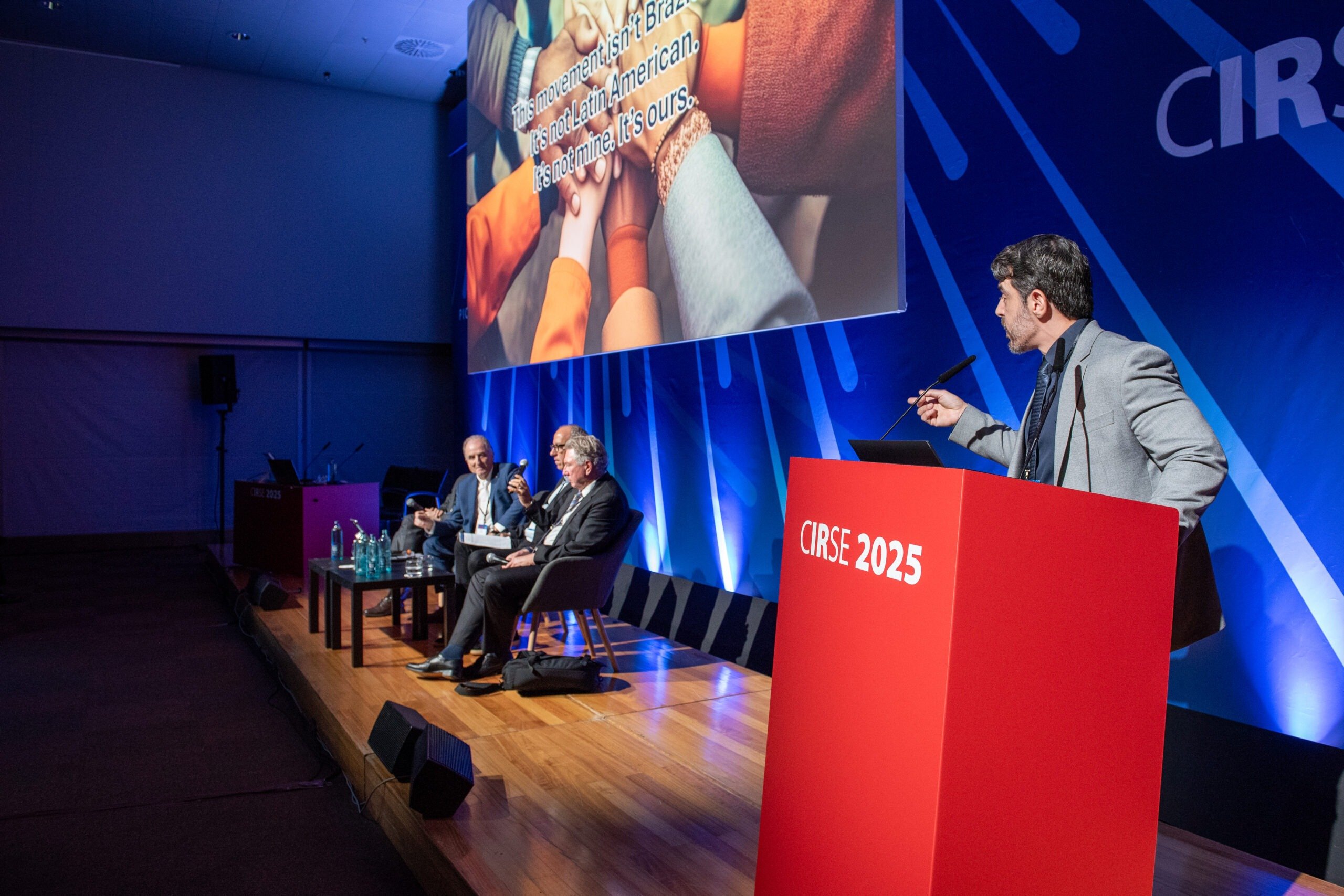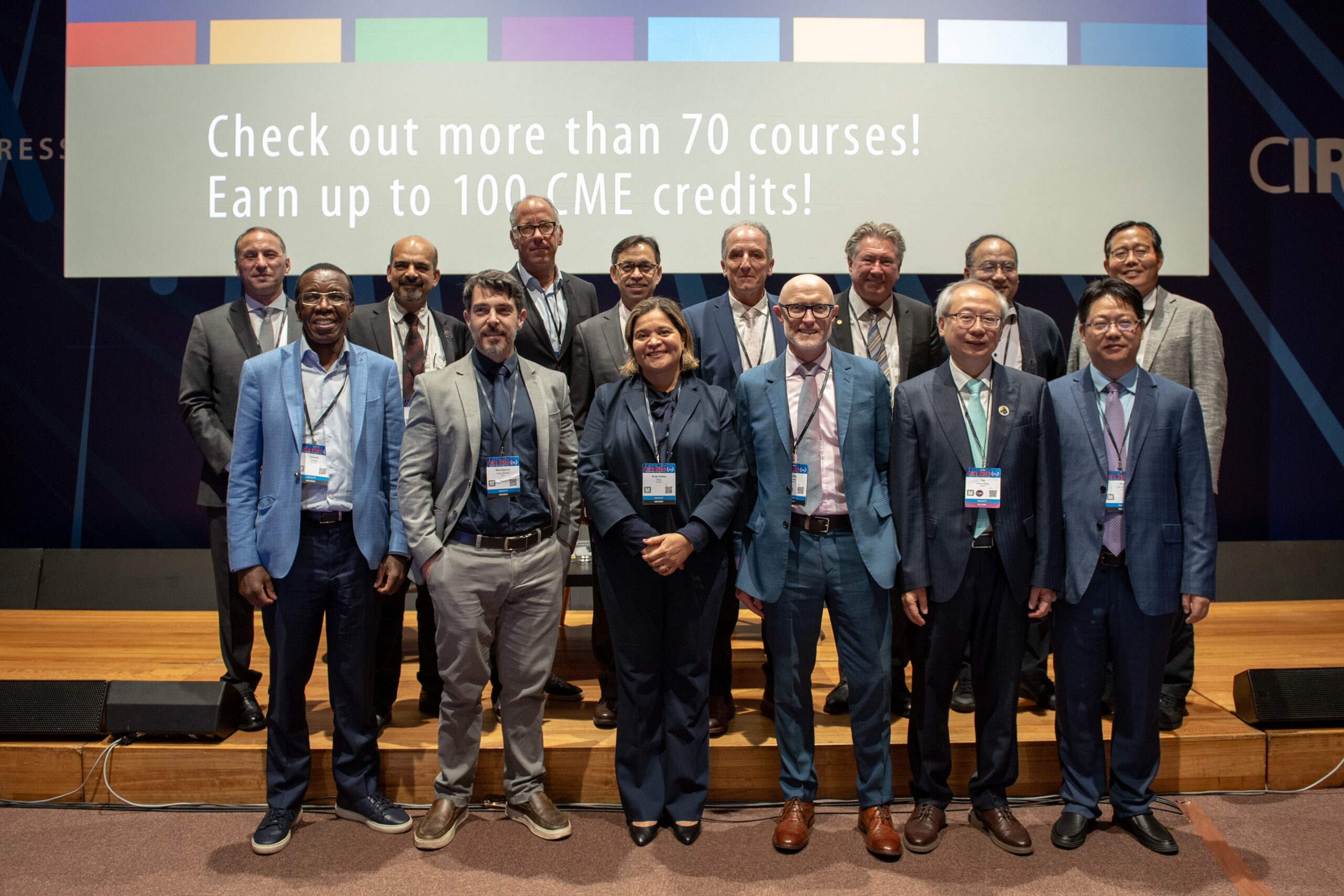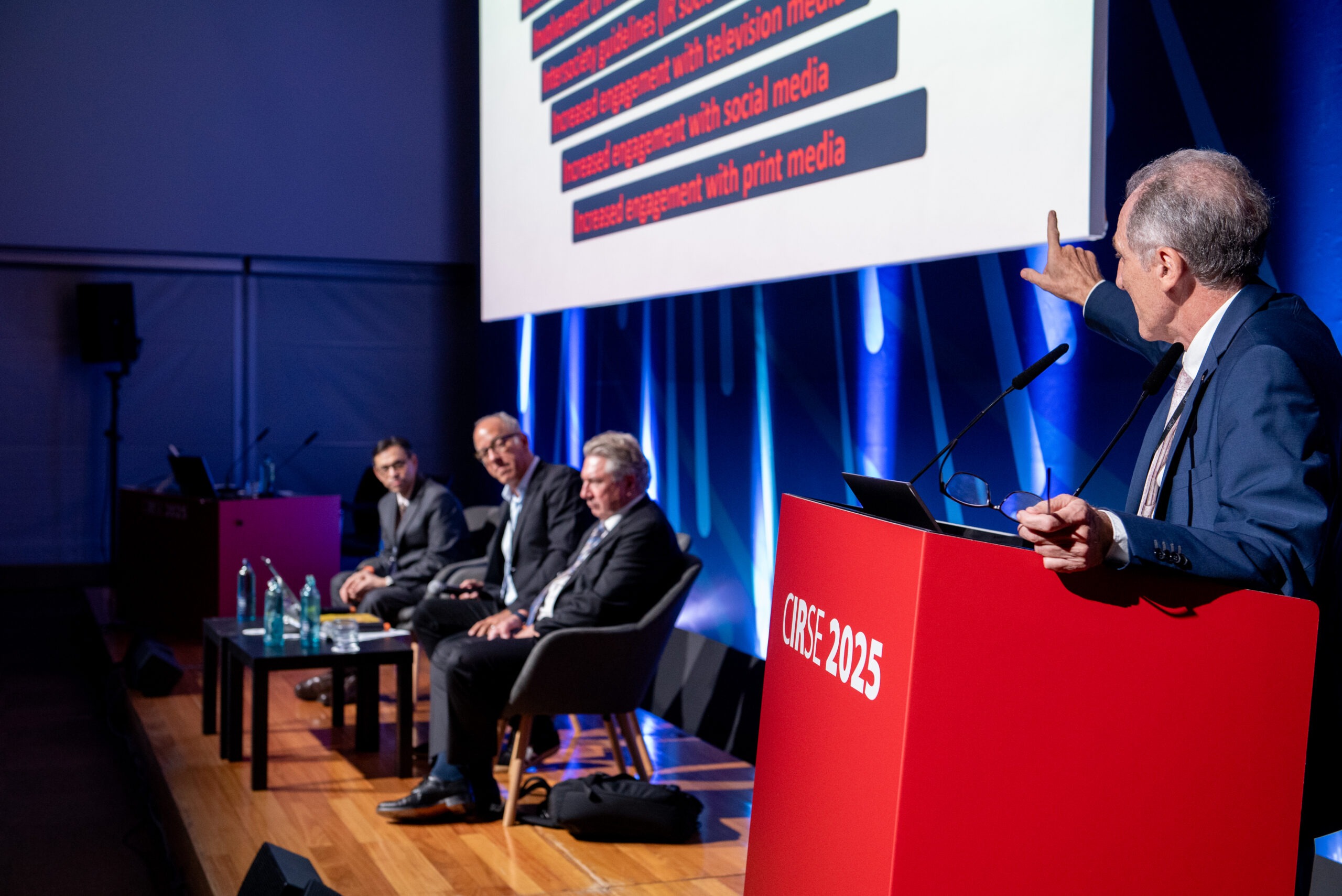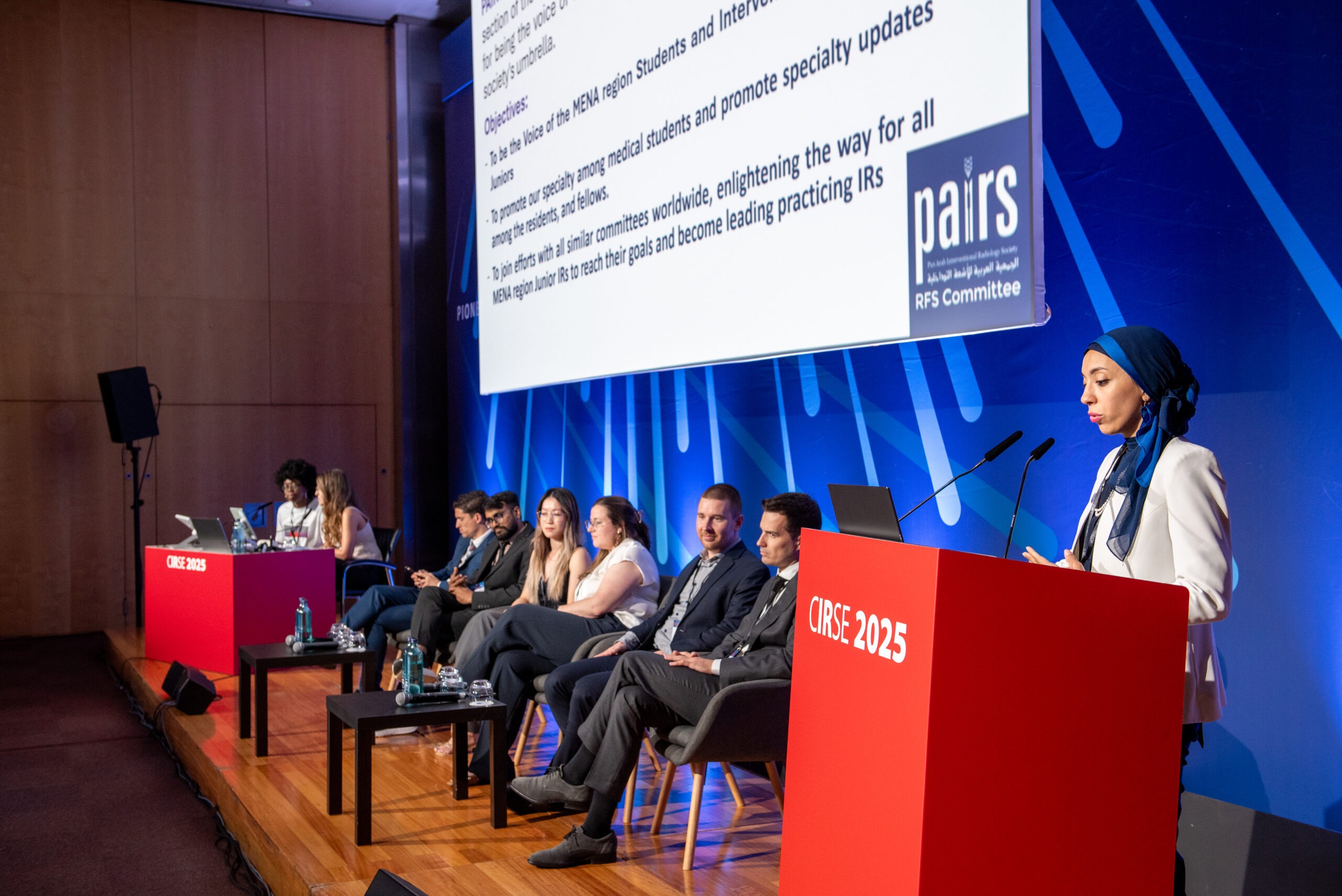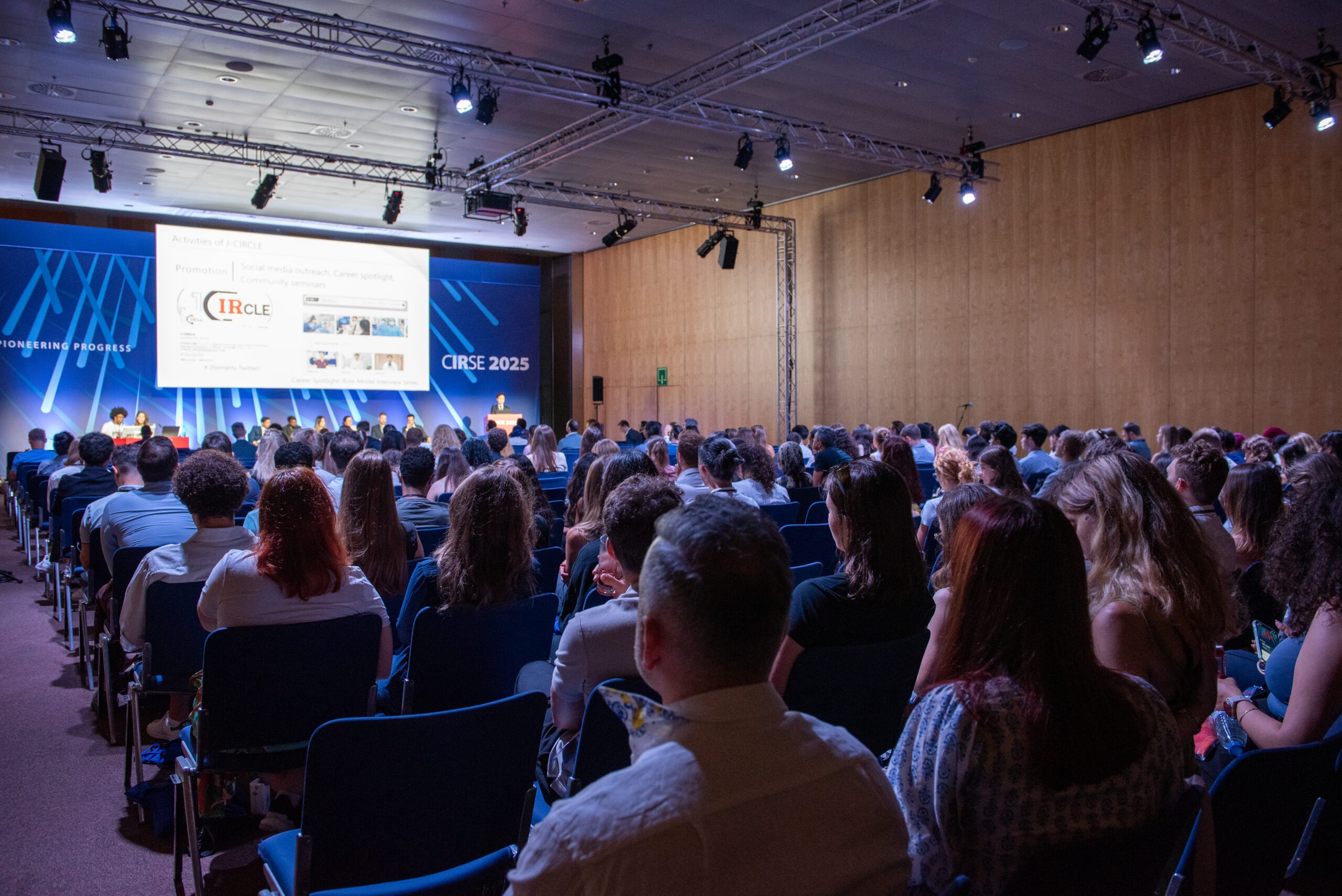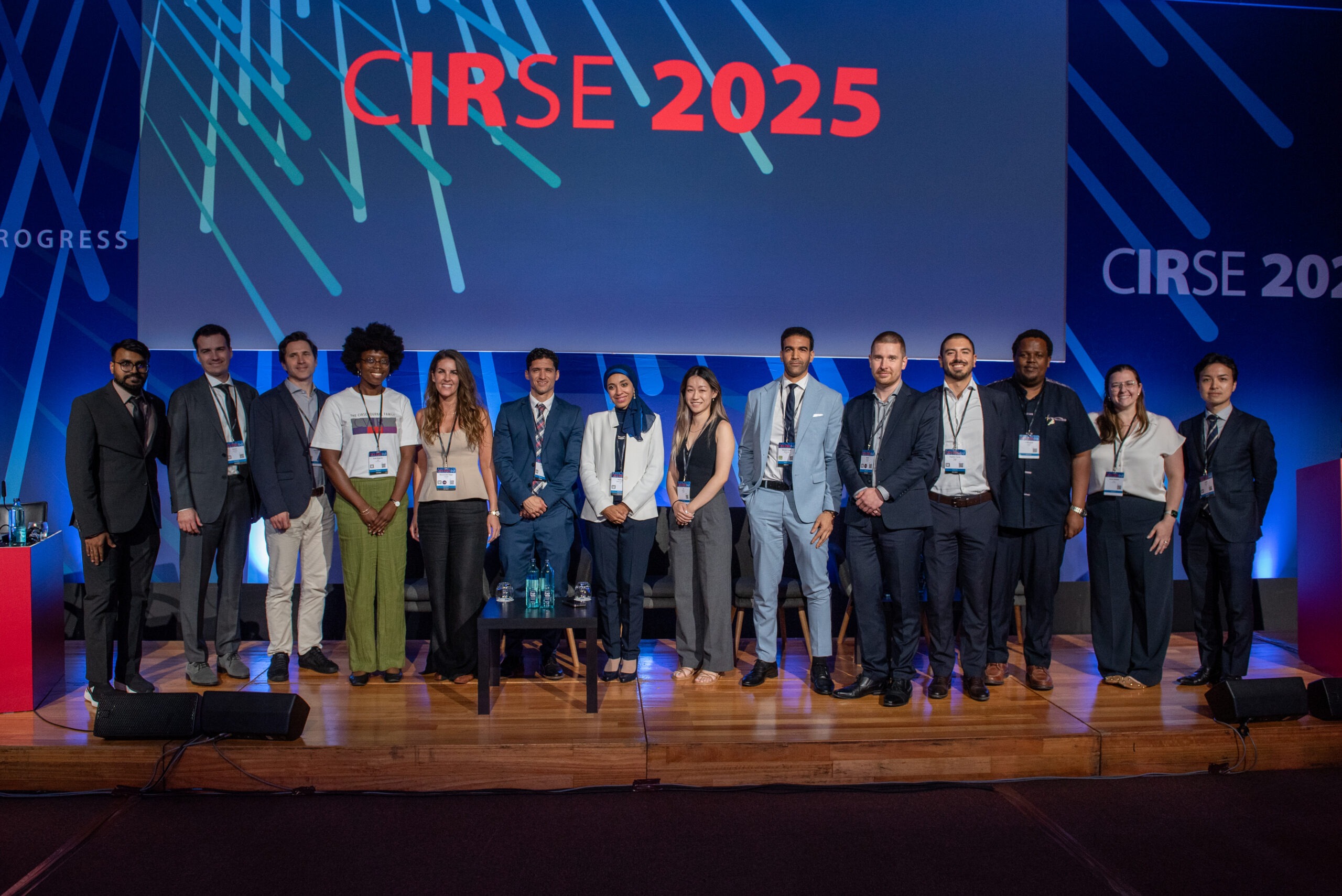October 9, 2025
The Global IR Summit and Global IR Juniors Summit which took place at CIRSE 2025 attracted IRs from around the world to discuss some of the most pressing political issues in the field.
Global IR Summit
Twice a year, CIRSE partners with the Society of Interventional Radiology (SIR) to host the Global IR Summit at their annual congresses. The fourth edition of the summit kicked off at CIRSE 2025 with a spotlight on the theme of IR’s visibility, particularly among patients and medical students.
“We all have a common vision, so this is a wonderful opportunity for us all to come together and learn from each other,” said Dr. Robert Lookstein, president of SIR and a session moderator.
A celebratory day for IR
Dr. Lucas Moretti Monsignore, President of SOBRICE (Brazil), spoke on efforts to advance World Interventional Radiology Day. Along with SIDI President Dr. Ethel Rivas Zuleta (Latin America), Dr. Moretti Monsignore conceptualized the idea and suggested celebrating the day on January 16 to commemorate the first angioplasty performed in 1964 by Charles Dotter. SOBRICE then developed visual graphics and social media content to boost engagement across Latin America. Going forward, there are plans to develop the commemorative day into one that is endorsed by IR societies around the globe and to request recognition by the World Health Organization. “We must celebrate our specialty loudly and together,” he emphasized.
In an inspiring talk, Dr. Shyamkumar Nidugala Keshava from ISVIR (India) presented results from an internal poll asking if ISVIR members if they were aware of World Interventional Radiology Day. Out of 105 responses, none knew it already existed. He noted that a similar observance, National Without a Scalpel Day, exists and emphasized the importance of collaboration particularly with junior wings of IR societies in promoting and popularizing World Interventional Radiology Day.

